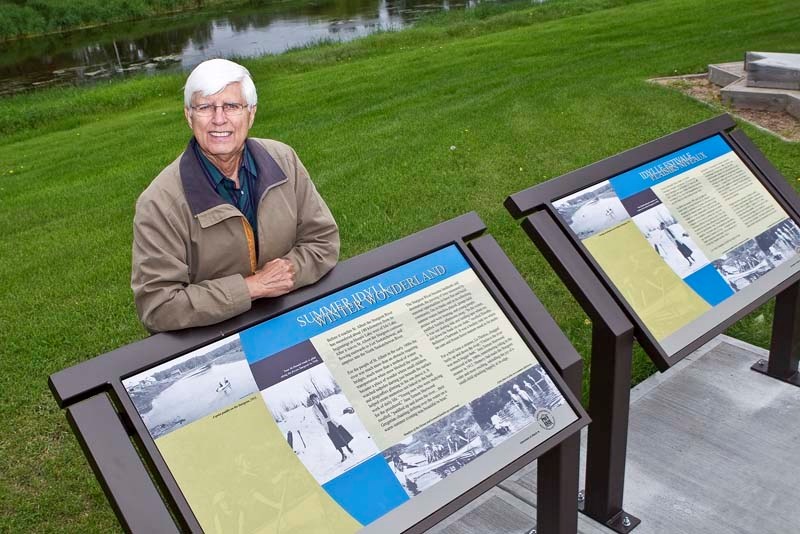The edge of the Sturgeon River is home to a new historical marker that tells a brief story about the social history of the river and its historical importance to the City of St. Albert.
Though similar in principle to the familiar provincial highway historical interest signs, this marker is the first one that Culture Alberta has located in an urban setting on a busy walking trail.
"What's happened is we've renewed our heritage markers program. Previously the large blue road signs were put up throughout the province, but for a number of reasons, they have become enormously expensive," said Matthew Wangler, executive director of Historic Resources Management, which is part of the provincial Culture Alberta department.
Wangler estimated the cost of the older-style highway markers at between $25,000 and $30,000 each, depending upon the size and remoteness of the location where they are installed. The highway signs averaged 78 inches wide by 114 inches tall.
Located near the old log cabin on Sturgeon Road near St. Albert Trail, the new historical marker is actually two signs, with one telling the story in French and the other telling the story in English. Each sign is 45 inches wide by almost 26 inches tall, and the approximate cost for the combined signs is less than $5,000.
"The highway signs will remain and continue to create interest, but at times there were problems with public accessibility and traffic and I suspect the signs such as the one in St. Albert will have more readership," Wangler said.
The idea for a sign telling the river's story began with St. Albert Historical Society chairman Ray Pinco, who originally thought the sign might be installed in time for St. Albert's 150th birthday party in 2011, at about the same time as the Founders' Walk signs were put up.
"At the time the historical markers sign was in transition and we were defining the program and coming up with new designs," said Wangler, who explained that in the future, most new signs will be put up at the request of communities or historical groups such as the St. Albert Historical Society.
Musée Héritage staff helped co-ordinate the research about the history of the Sturgeon and helped researcher/writer Pat Myers by providing her with oral histories that are found in the museum archives.
Myers provides stories about ice hockey on the river, when the settlers used pieces of manure for pucks. Accompanying photos show small children swimming and playing in a river that appears much wider than it is today. And most poetically, Myers wrote about the priests in training, who paddled down the river singing Gregorian chants.
"It is in an excellent location because it faces the river and it really gives the historical importance of the river to the community," said Ann Ramsden, director of heritage at the Musée Héritage Museum.
"I'm most pleased because St. Albert used to have a sign until sometime in the '70s when they took it down to widen the trail,” Pinco said. “I'm pleased with the fact that we got our sign back and that they used the oral histories to tell a different story of the river.”




